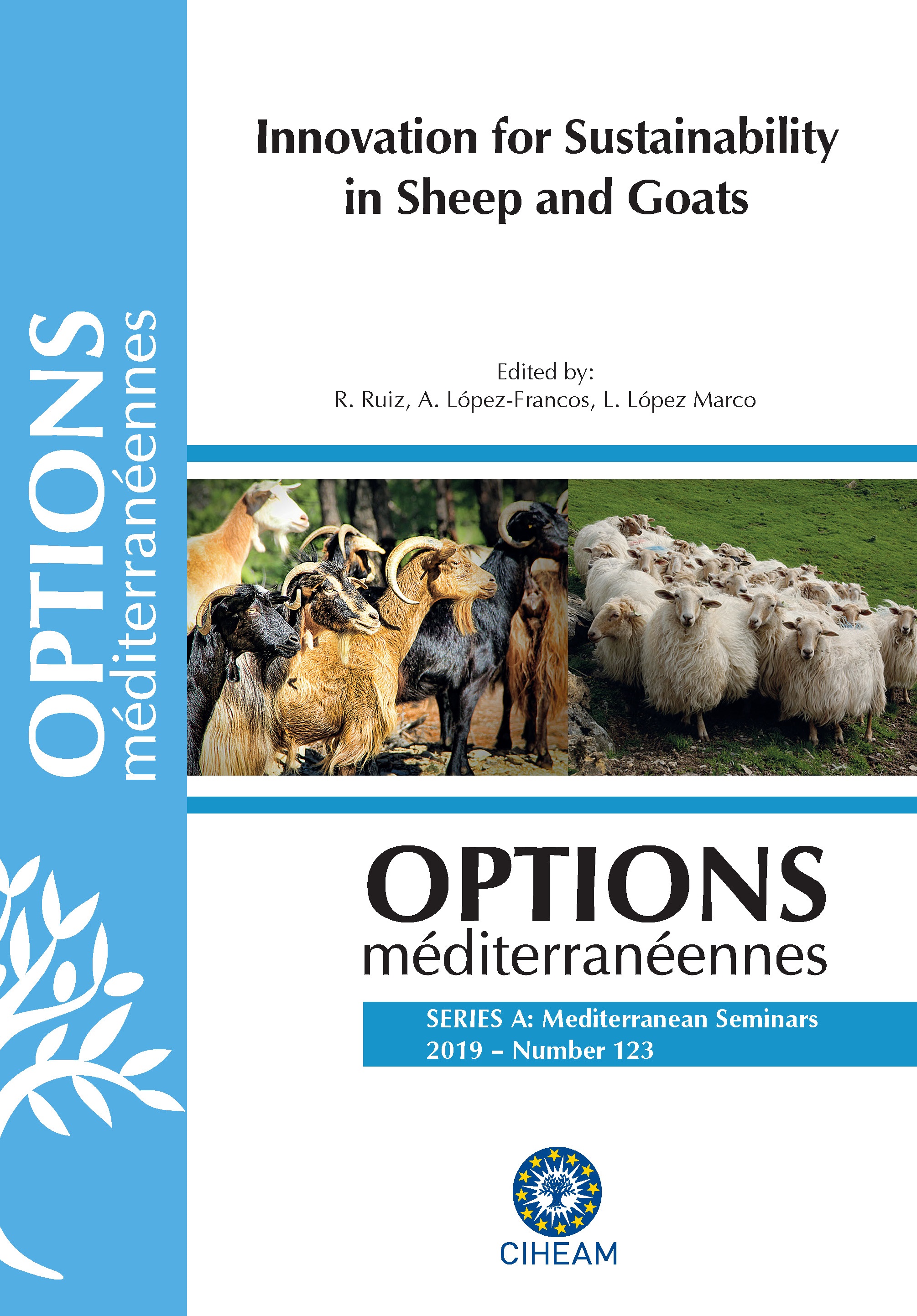| Article précédent | p. 99-104 | Article suivant |
Chemical composition and essential oil antimicrobial activity of four grazed plants growing wild in northeastern Tunisia
The aim of this work was to study the chemical composition and the antibacterial activity of essential oils of Rosmarinus officinalis; Thymus vulgaris; Myrtus communis; Artemisia herba-alba from northeastern Tunisia (Zaghouan). Leaves and twigs from these species were collected in spring and the essential oils (EO) were extracted by hydrodistillation and then analysed using GC/MS. The antibacterial activity was studied by diffusion in agar against four strains: Staphylococcus aureus ATCC29213; Staphylococcus aureus 6816; Listeria monocytogenes ATCC19195 and Escherichia coli ATCC35218. Results showed that Rosmarinus officinalis EO are characterized by the presence of 1,8-cineole (39.0%) as chemotype. The Thymus vulgaris EO are composed mainly of thymol (60.0%). The Myrtus communis EO are composed of 29.5% α-Pinene, 20.4% limonene and 11.5% linalool. Artemisia herba-alba EO are mainly composed of thujone (42%) and camphor (17.5%). Rosmarinus officinalis EO did not show any activity at 1/100 dilution. Whereas at this level Myrtus communis showed anti-bacterial activity only against Escherichia coli. The cited concentration for Artemisia herba-alba was sufficient to inhibit the growth of all strains, except Listeria monocytogenes. T. vulgaris EO showed the highest anti-bacterial effect against all the tested bacteria. This bioactivity is mainly because these EO are rich in thymol, known for its effectiveness against the microbial agents. It was concluded that the studied species have an important antibacterial activity that can be tested to modulate ruminant fermentation in order to improve the efficiency of digestion and reduce the production of greenhouse gases.
Le but de ce travail était d’étudier la composition chimique et la activité antibactérienne des huiles essentielles de Rosmarinus officinalis ; Thymus vulgaris ; Myrtus communis ; Artemisia herba-alba du Nord-Tunisie (Zaghouan). Les feuilles et les brindilles de ces espèces ont été collecté au printemps et HE ont été extraites par hydrodistillation, puis analysées par GC/MS. L’activité antimicrobienne a été réalisée par diffusion dans un milieu gélose contre quatre souches Staphylococcus aureus ATCC29213 ; Staphylococcus aureus 6816 ; Listeria monocytogene ATCC19195 and Echerichia coli ATCC35218. Les résultats ont montré que les huiles essentielles de Rosmarinus officinalis sont caractérisées par la présence de 1,8-cinéol (39,0%) en tant que composants chimiques principaux. Les huiles essentielles de Thymus vulgaris sont composées principalement de thymol (60,0%). Les huiles essentielles de Myrtus communis étaient composées principalement de 29,5% α-pinène, limonène 20,4% et 11,5% linalol alors qu’Artemisia herba-alba sont principalement composées de thujone (42%) et le camphre (17,5%). Les huiles essentielles de Rosmarinus officinalis n’a pas montré une activité à la dilution 1 / 100. Par contre, à ce niveau, Myrtus communis a une activité antibactérienne seulement contre Escherichia coli. Pour Artemisia herba-alba la concentration citée était suffisante pour inhiber la croissance de toutes les souches, à l’exception de Listeria monocytogene. Pour les huiles essentielles de T. vulgaris, elles montré le plus grand effet antibactérien contre toutes les bactéries testées. Cette bioactivité est principalement due à leur richesse en thymol, connu pour son efficacité contre les agents microbiens. Il a été conclu que les espèces étudiées ont une activité antibactérienne importante qui peut être testé pour moduler la fermentation des ruminants afin d’améliorer l’efficacité de la digestion et de réduire la production de gaz à effet de serre.
- [ Afficher ]
- [ Télécharger ]
- [ Exporter la citation ]
Vous pouvez télécharger la citation au format :
- [ Imprimer ]
-
Mots-clés
ANTIMICROBIEN, ARTEMISIA, HUILE ESSENTIELLE, MYRTUS COMMUNIS, PLANTE A HUILES ESSENTIELLES, ROSMARINUS OFFICINALIS, THYMUS (GENRE)Citer cet article
Bettaieb A., Zouaoui R., Nadia F., Elkahoui S., Moujahed N. Chemical composition and essential oil antimicrobial activity of four grazed plants growing wild in northeastern Tunisia. In : Ruiz R. (ed.), López-Francos A. (ed.), López Marco L. (ed.). Innovation for sustainability in sheep and goats. Zaragoza : CIHEAM, 2019. p. 99-104. (Options Méditerranéennes : Série A. Séminaires Méditerranéens; n. 123). 2. Joint Seminar of the Subnetworks on Nutrition and on Production Systems of the FAO-CIHEAM Network for Research and Development in Sheep and Goats, 2017/10/03-05, Vitoria-Gasteiz (Spain). http://om.ciheam.org/om/pdf/a123/00007866.pdf



